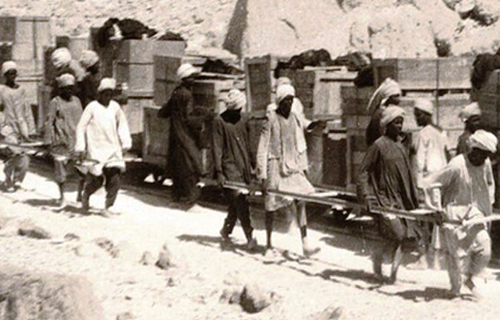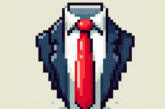
A new exhibition curated by a University of East Anglia (UEA) Egyptologist promises a different view on the ‘golden age’ of archaeology and photography in the Middle East.
aTP- Arab tourism portal News- On the 95th anniversary of the discovery of the tomb of Tutankhamun in November 1922, The Collection in Lincoln will host Photographing Tutankhamun, an exhibition about Lincolnshire-born photographer Harry Burton and the images he captured during the decade-long excavation of the tomb in Egypt’s Valley of the Kings.
Dr Christina Riggs, a reader in art history at UEA’s School of Art, Media and American Studies, is curating the project, which opens November 10 and runs until the end of January 2018. Dr Riggs is the first person to study the entire archive of excavation photographs, as well as the first to consider them from the viewpoint of photographic history. That’s why, she said, the display in Lincoln will provide “a different view on archaeology and photography in the Middle East” – in the past and the present.
Dr Riggs said: “Photography was essential to archaeology, but Burton’s photography did much more than simply record information about the tomb and its treasures. By looking at the different kinds of photographs Burton made, and how they were used, this exhibition places the Tutankhamun discovery in its historical context and asks whether photographs influence the way we think about both ancient and modern Egypt.”
More than two dozen images have been created especially for the exhibition using digital scans from Burton’s original glass-plate negatives, including some never seen before. Also on display are newspaper and publicity materials from the 1920s and beyond, which show how the photographs were used in print. The scans have been made by The Griffith Institute at the University of Oxford, which is home to excavator Howard Carter’s own records of the excavation, including around 1800 negatives and a set of photo albums.
For the project, Dr Riggs has also studied some 1400 photographs by Burton in the Metropolitan Museum of Art, New York. Harry Burton worked for the museum for most of his life, and his personal correspondence in their archives has offered important new insights into his work on the tomb of Tutankhamun – including some of the technical problems, personal tensions, and political issues behind the scenes.
Dr Riggs said: “When the tomb of Tutankhamun was discovered in the 1920s, archaeology liked to present itself as a science that only Europeans and Americans could do. But archaeology relied on input from the Egyptian government and from hundreds of Egyptians who worked alongside men like Harry Burton and Howard Carter. Photography helps us think about what Tutankhamun meant to Egyptians in the 1920s – and helps us question what science looks like, and who does it.”
Dr Riggs carried out part of her study during a research fellowship awarded by the British Academy, which is the UK’s national body for the humanities and social sciences. She has written a book, also called Photographing Tutankhamun, which will be pushed by Bloomsbury in 2018. Her work contributed to the BBC4 documentary ‘The Man Who Shot Tutankhamun’ (Wavelength Productions, airdate March 2017). The exhibition will travel to the Museum of Archaeology and Anthropology at Cambridge on June 20,2018.
Dr Riggs will be giving a talk about the project and the exhibition, ‘From Lincolnshire to Luxor: Harry Burton, the camera and King Tut’, on Dec 2 at The Collection.









